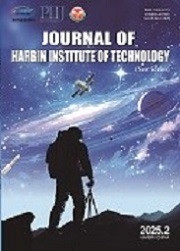|
| Abstract: |
| In order to explore the characteristics of ultra-high-strength concrete exposed to high temperature, residual mechanical properties and explosive spalling behavior of ultra-high-strength concrete (UHSC) and high strength concrete (HSC) exposed to high temperatures ranging from 20 ℃ to 800 ℃ were determined. The microstructure of the specimens after exposure to elevated temperature was analyzed by means of scanning electron microscope (SEM) and mercury intrusion porosimetry (MIP). The residual compressive strengths of UHSC and HSC were first increased and then decreased as temperature increased. After exposure to 800 ℃, the compressive strengths of UHSC and HSC were 24.2 % and 22.3 % of their original strengths at 20 ℃, respectively. The residual splitting tensile strengths of both UHSC and HSC were consistently decreased with the temperature increasing and were approximately 20% of their original strengths after 800 ℃. However, the residual fracture energies of both concretes tended to ascend even at 600 ℃. The explosive spalling of UHSC was more serious than that of HSC. Moisture content of the specimens governs the explosive spalling of both concretes with a positive correlations, and it is more pronounced in UHSC. These results suggest that UHSC suffers a substantial loss in load-bearing capacity and is highly prone to explosive spalling due to high temperature. The changes in compressive strength are due to the changes in the density and the pore structure of concrete. The probability and severity of explosive spalling of UHSC are much higher than those of HSC due to the higher pore volume in HSC. |
| Key words: ultra-high-strength concrete high strength concrete residual mechanical properties explosive spalling |
| DOI:10.11916/j.issn.1005-9113.16096 |
| Clc Number:TU528.3 |
| Fund: |
|
| Descriptions in Chinese: |
| 超高强混凝土遭受高温后的残余力学性能和高温爆裂行为 朋改非,杨娟 (北京交通大学 土木建筑工程学院,北京 100044) 创新点说明:通过对比超高强混凝土与高强混凝土的高温爆裂行为试验研究,发现超高强混凝土遭受高温作用过程中极易发生高温爆裂,且严重程度显著大于高强混凝土。 研究目的: 探讨超高强混凝土遭受高温后力学性能损伤特征、高温作用下的高温爆裂行为特征及含湿量的影响作用。 研究方法: 以试验为主进行超高强混凝土与高强混凝土的宏观高温性能对比研究,并采用SEM扫描电镜观测遭受高温后的混凝土试件的微观形貌变化和MIP压汞法测定试件内部孔隙结构变化。 结果: 1)两种混凝土遭受高温后的残余抗压强度随着目标温度的升高均呈现先升高再降低的趋势,但临界目标温度不同;但其残余劈裂抗拉强度呈现逐渐下降的趋势,而其残余断裂能在600 °C之前呈现逐渐升高的趋势。 2)遭受目标温度为800 °C高温加热过程中,含湿量不高于50%的高强混凝土试件均未发生爆裂,63%和75%含湿量情况下,6个试件中仅1个试件发生高温爆裂;含湿量为25%的超高强混凝土试件已有部分试件发生高温爆裂,含湿量不低于50%情况下,超高强混凝土试件全部爆裂为碎块。 3)扫描电镜微观观测结果揭示了两种混凝土的残余抗压强度呈现先升高再降低的原因:低于临界温度的高温引起混凝土试件内部“二次水化”;压汞法测定试件内部孔隙结构揭示了超高强混凝土发生高温爆裂的严重程度显著大于高强混凝土的原因:超高强混凝土内部结构极为密实,显著大于高强混凝土。 结论 : 1)超高强混凝土遭受高温后的强度损失百分率低于高强混凝土,但前者的断裂能损失百分率高于后者; 2)超高强混凝土因其极为致密的内部结构在遭受高温作用下极易发生高温爆裂,且其高温爆裂严重程度显著高于高强混凝土; 3)含湿量显著影响混凝土的高温爆裂,尤其对超高强混凝土影响更显著。 4)扫描电镜微观观测结果揭示了两种混凝土的残余抗压强度呈现先升高再降低的原因:低于临界温度的高温引起混凝土试件内部“二次水化”;压汞法测定试件内部孔隙结构揭示了超高强混凝土发生高温爆裂的严重程度显著大于高强混凝土的原因:超高强混凝土内部结构极为密实,显著大于高强混凝土。 关键词:超高强混凝土;高强混凝土;残余力学性能;高温爆裂 |




